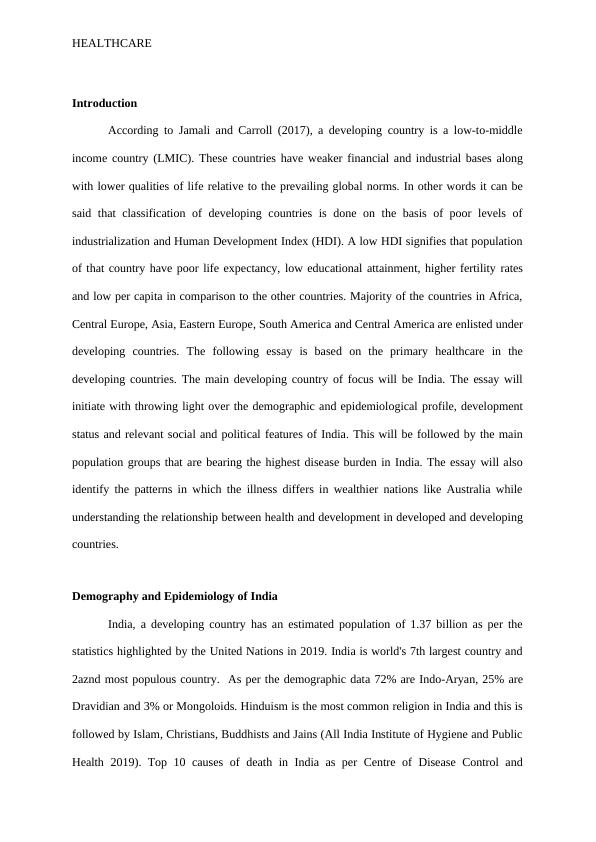Primary Healthcare in Developing Countries: A Focus on India
Choose one developing country, describe its demographic and epidemiological profile, development status, and relevant social and political features. Identify the population groups bearing the greatest burden of disease and compare the pattern of illness with wealthier nations. Demonstrate understanding of development and its relationship with health in the selected country.
Added on 2022-12-15
About This Document
Primary Healthcare in Developing Countries: A Focus on India
Choose one developing country, describe its demographic and epidemiological profile, development status, and relevant social and political features. Identify the population groups bearing the greatest burden of disease and compare the pattern of illness with wealthier nations. Demonstrate understanding of development and its relationship with health in the selected country.
Added on 2022-12-15
End of preview
Want to access all the pages? Upload your documents or become a member.




